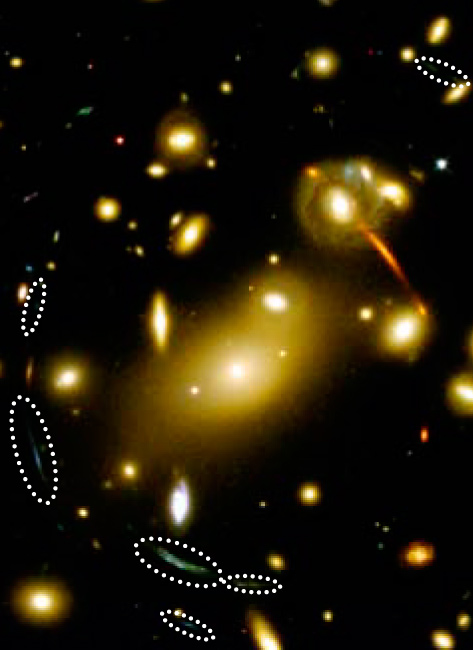Key Takeaways:
Galaxy clusters contain hundreds of galaxies, a lot of hot gas, and even more invisible dark matter. A cluster’s extreme mass warps space-time, and light from more distant objects follows those bends and lands on scientists’ detectors.
The background galaxies are from an earlier time in the universe than the foreground galaxy cluster, and thus astronomers see them at younger stages. Young galaxies hold a lot of forming stars, which glow in blue and ultraviolet light due to the high energy that is radiated during star birth. That’s why the warped images of a distant galaxy — i.e., the arcs you mention — lensed by a foreground galaxy cluster appear blue.
Liz Kruesi, Associate Editor










